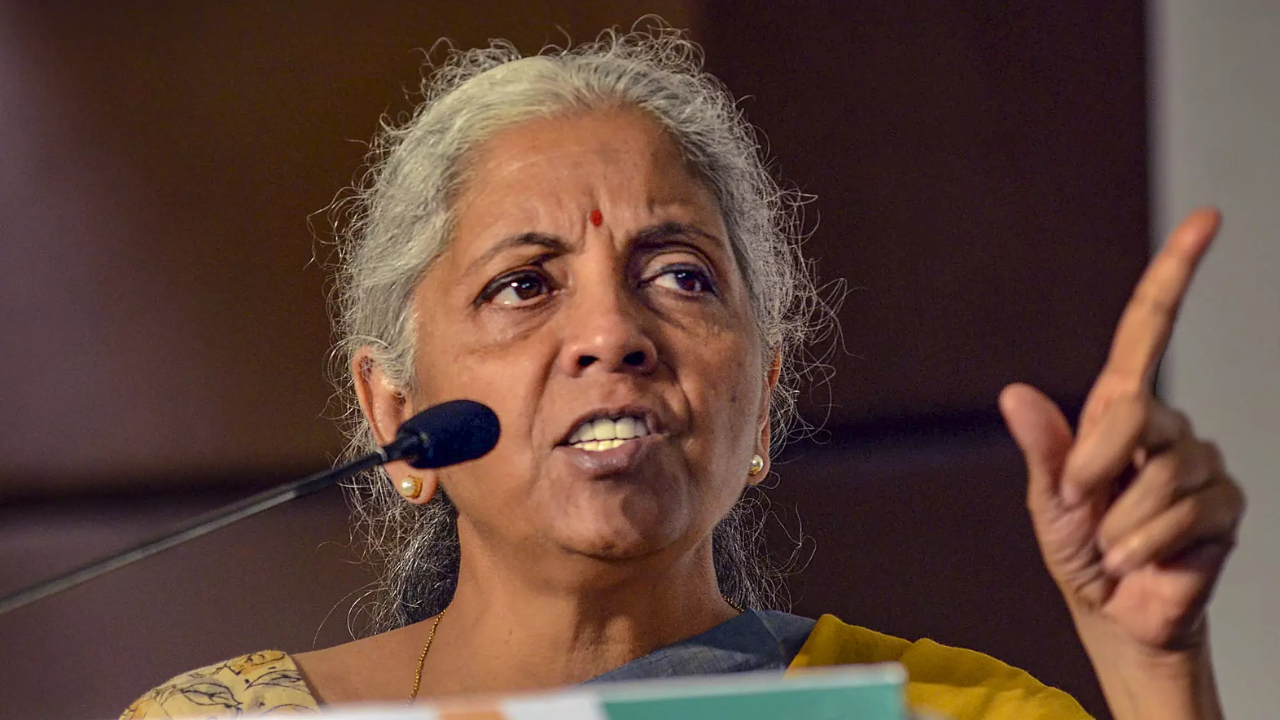
Nirmala Sitharaman slams Cong’s ‘khata khat’ welfare promises | India News
[ad_1]
NEW DELHI: Finance minister Nirmala Sitharaman Monday accused Congress of making “khata khat” poll promises without calculating the cost of implementing those schemes.
Accusing UPA of “fiscal short-sightedness” and “hidden debt”, the FM asked Rahul Gandhi to answer if the announcements he has made would translate into higher borrowings or higher taxes.”How many welfare schemes would @RahulGandhi shut down to accommodate the fiscal cost of the ‘khata khat’ schemes?”
Last month, Rahul had announced that if voted to power, his party would transfer Rs 1 lakh in the account of one woman from every poor household in the country if they win the elections. “The question isn’t just about borrowing; it’s also about applying thought on expenditure. Congress is interested in spending on short-term populist measures and there has never been a focus on long-term development,” she said in a social media post.
Pointing to the UPA’s track record, Sitharaman alleged that UPA govt had resorted to “window dressing” and did not provide a clear picture of govt finances. In contrast, she said, Modi govt has followed a transparent mechanism and ensured better delivery of service and checked leakages through initiatives such as direct benefit transfer.
“The truth is our govt’s fiscal management is much better than that of the UPA despite facing Covid-19 pandemic in which substantial resources were used for relief efforts,” the FM said. During the pandemic, she said, govt did not follow the “borrow, spend and even print money” suggestion from “luminaries” in the opposition, some of whom are now complaining about high debt levels, a charge that the FM dismissed by dishing out data.
“A cross-country comparison reveals that India has fared relatively well and maintains a general govt debt ratio below that of FY2003… In a comparative analysis with other low and middle-income countries (LMICs), India’s external debt scenario is robust. India’s share of short-term debt in the total external debt is 18.7%. This is lower than that of other LMICs like China, Thailand, Turkey, Vietnam, South Africa and Bangladesh, which have higher percentages,” Sitharaman added.
Accusing UPA of “fiscal short-sightedness” and “hidden debt”, the FM asked Rahul Gandhi to answer if the announcements he has made would translate into higher borrowings or higher taxes.”How many welfare schemes would @RahulGandhi shut down to accommodate the fiscal cost of the ‘khata khat’ schemes?”
Last month, Rahul had announced that if voted to power, his party would transfer Rs 1 lakh in the account of one woman from every poor household in the country if they win the elections. “The question isn’t just about borrowing; it’s also about applying thought on expenditure. Congress is interested in spending on short-term populist measures and there has never been a focus on long-term development,” she said in a social media post.
Pointing to the UPA’s track record, Sitharaman alleged that UPA govt had resorted to “window dressing” and did not provide a clear picture of govt finances. In contrast, she said, Modi govt has followed a transparent mechanism and ensured better delivery of service and checked leakages through initiatives such as direct benefit transfer.
“The truth is our govt’s fiscal management is much better than that of the UPA despite facing Covid-19 pandemic in which substantial resources were used for relief efforts,” the FM said. During the pandemic, she said, govt did not follow the “borrow, spend and even print money” suggestion from “luminaries” in the opposition, some of whom are now complaining about high debt levels, a charge that the FM dismissed by dishing out data.
“A cross-country comparison reveals that India has fared relatively well and maintains a general govt debt ratio below that of FY2003… In a comparative analysis with other low and middle-income countries (LMICs), India’s external debt scenario is robust. India’s share of short-term debt in the total external debt is 18.7%. This is lower than that of other LMICs like China, Thailand, Turkey, Vietnam, South Africa and Bangladesh, which have higher percentages,” Sitharaman added.
[ad_2]
Source link
CATEGORIES INDIA
